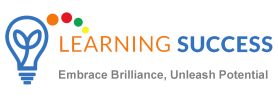Implement Continuous Monitoring for Educational Improvement
One key insight shared involves the critical role of ongoing monitoring in educational improvement plans for children with Education. The podcast emphasizes that waiting until the end of the year to evaluate progress is akin to administering a final exam without any formative assessments during the learning process. Instead, schools should implement a system to continuously monitor the impact of each educational strategy throughout the year. For example, regular assessments and feedback loops can help educators adjust teaching methods in real-time to better support student learning. This approach ensures that educational plans remain effective and responsive to students’ needs, ultimately leading to improved educational outcomes for children with Education.

Adapting Education: Real-Time Strategies for Student Success
As a parent of a child with education, you know the journey can be filled with both triumphs and challenges. What we understand is that you have the power to make a significant difference in your child’s educational path. In this guide, you’ll discover three essential strategies: the importance of ongoing monitoring in educational improvement plans, setting clear and detailed objectives with key results, and adapting educational strategies based on formative data. Embrace these insights to empower yourself and advocate for your child’s success.
Setting Clear Educational Objectives and Key Results
One key insight shared involves the importance of setting clear, detailed objectives and key results in education. The transcript emphasizes that having a completed puzzle box provides a vision of the educational goals, guiding everyone involved. Schools can work on specific objectives throughout the year, such as improving literacy rates or enhancing STEM skills, to move closer to this vision. By the end of the year, key results should be defined as smaller, detailed goals, like increasing reading proficiency by 10% or achieving a certain score in a standardized math test. For parents, advocating for such clear objectives and key results ensures that all stakeholders are aligned and working towards the same educational outcomes for their children.
Waiting until the end of the year to measure the change is like waiting until the end of the semester to give a summative assessment having not done any formative assessment throughout the entire Learning Journey.
”
Adapting Education with Formative Data
One key insight shared involves the importance of adapting educational strategies based on formative data. When educators use tools like consolidation journals and find that students are not grasping the material, it serves as a critical indicator that a change in approach is necessary. For instance, if no students understand a concept presented in a journal, the instructor might need to allocate more time or place greater emphasis on that area. This might mean planning different activities or altering the teaching method to better suit student needs. For parents, this underscores the value of supporting educators in utilizing formative assessments to tailor education in real-time, ensuring their children receive the most effective learning experience possible.
Key Takeaways:
Ongoing Monitoring and Assessment: It's crucial for parents to understand that schools should implement ongoing monitoring and assessment to track the progress of their children with learning challenges. This continuous evaluation helps educators adjust teaching strategies and support mechanisms throughout the year, ensuring that interventions are effective and tailored to the child's needs. Just like formative assessments in the classroom, ongoing monitoring in district improvement plans can provide immediate feedback and allow for timely adjustments to better support student learning.
Clear Objectives and Action Items: Parents should be aware that schools need to set clear objectives and specific action items to support children with learning challenges. These objectives should be aligned with the overall vision of the educational program, and action items should be measurable and focused. By concentrating on fewer, well-defined actions, schools can ensure that efforts are targeted and effective, leading to meaningful progress for the child.
Stakeholder Feedback and Engagement: Engaging with stakeholders, including parents, is vital for the success of educational programs for children with learning challenges. Schools should gather feedback from parents and students to assess the impact of their initiatives. This not only helps in monitoring the effectiveness of the actions taken but also builds trust and ensures that the educational strategies are relevant and responsive to the needs of the students and their families.
“Implementing Home-Based Educational Monitoring”
For parents looking to enhance their child’s education at home, integrating ongoing monitoring and assessment into daily routines can be highly beneficial. Simple strategies like setting weekly learning goals with your child, such as mastering a new set of vocabulary words or improving their multiplication skills, can keep them engaged and on track. Regularly reviewing these goals together, perhaps during a dedicated time each Sunday, helps both parent and child assess progress and adjust strategies as needed. For instance, if a child struggles with reading comprehension, parents can implement more frequent, shorter reading sessions with follow-up discussions to boost understanding. By consistently measuring and adapting to their child’s educational needs, parents can foster a supportive learning environment that mirrors the ongoing assessment practices used effectively in schools, enhancing their child’s number sense and overall academic growth.
Having the completed puzzle box is really important because it helps give everyone a pathway, a vision of like what we’re trying to get closer to.
”“Monitor and Tailor for Child’s Growth”
For parents of children navigating the education system, embracing ongoing monitoring and assessment can lead to significant long-term benefits and positive outcomes. By regularly tracking progress, educators can tailor their approaches to meet the unique needs of each child, fostering a more personalized learning experience. This method not only helps in identifying areas where a child excels but also highlights opportunities for growth, ensuring that no potential is left untapped. Parents should remain encouraged, understanding that while progress may be gradual, these educational strategies, which enhance problem solving skills, are designed to support their child’s continuous development. It’s important to set realistic expectations and celebrate the small victories along the way, as these are the building blocks to long-term success and fulfillment in education.
Empower your child’s educational journey with ongoing monitoring and personalized strategies. Discover how the Brain Bloom System can help tailor learning to meet your child’s unique needs, fostering continuous development and success.

